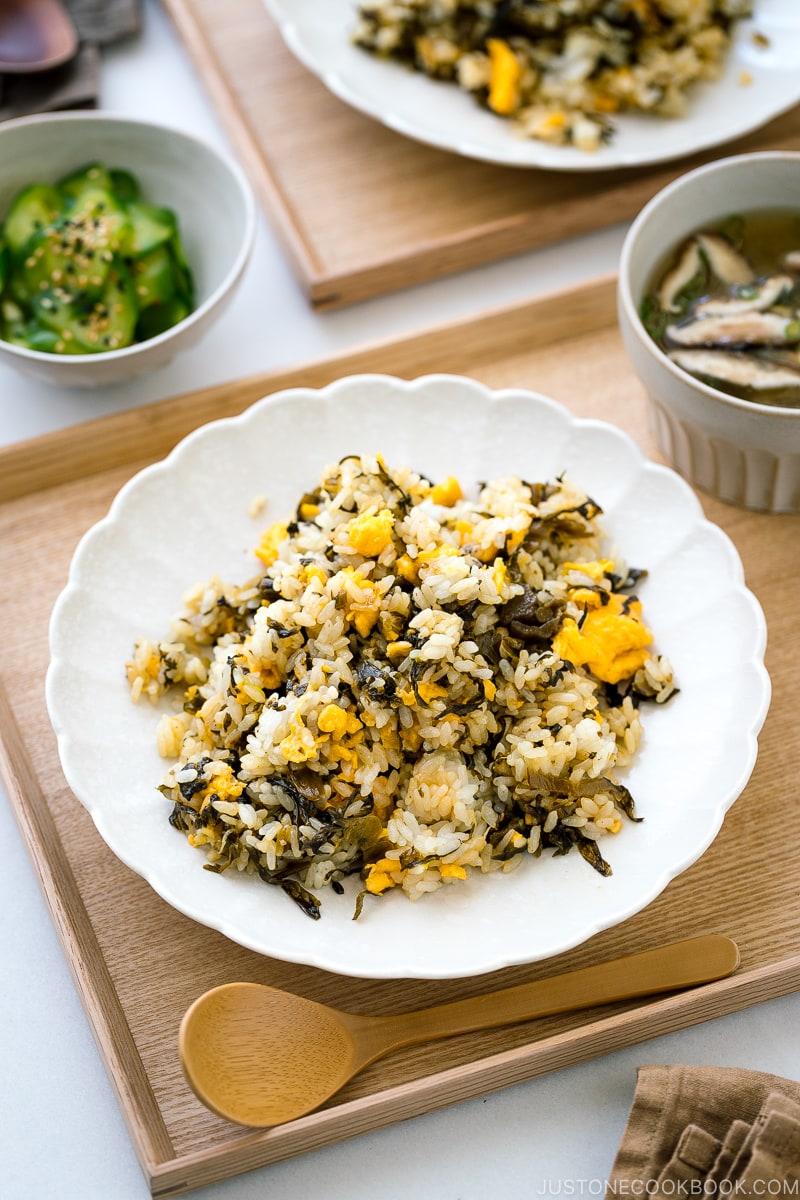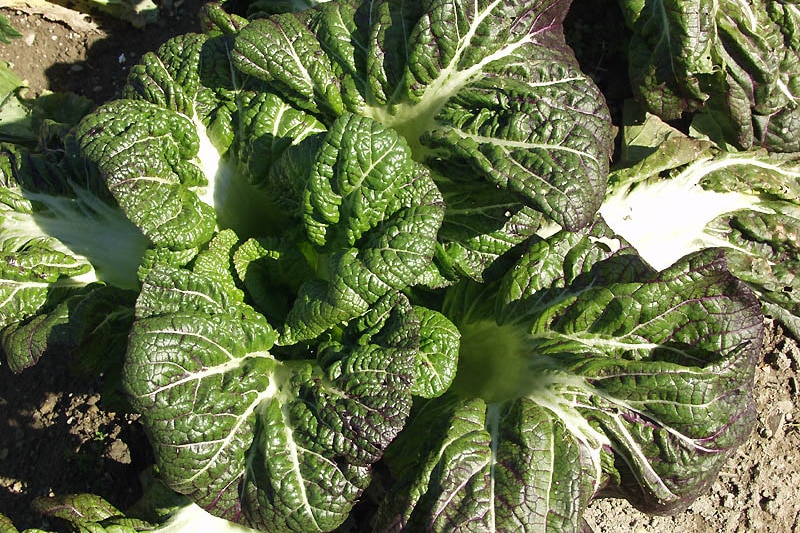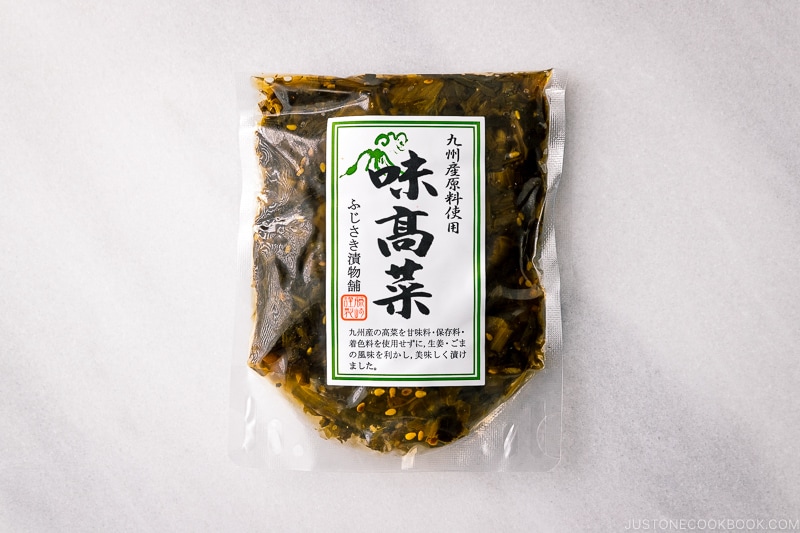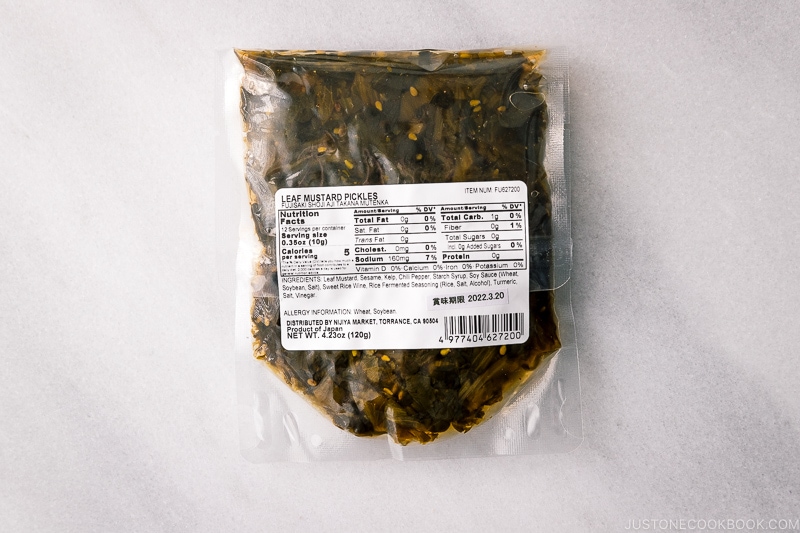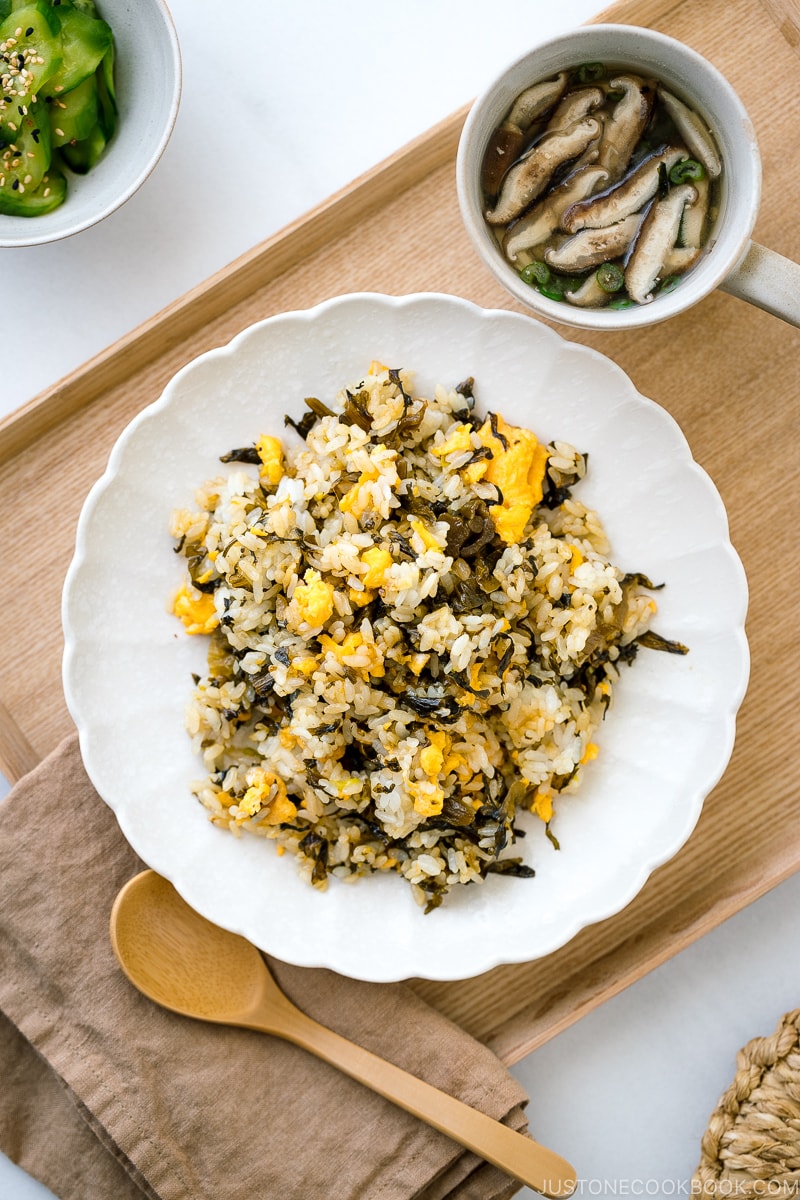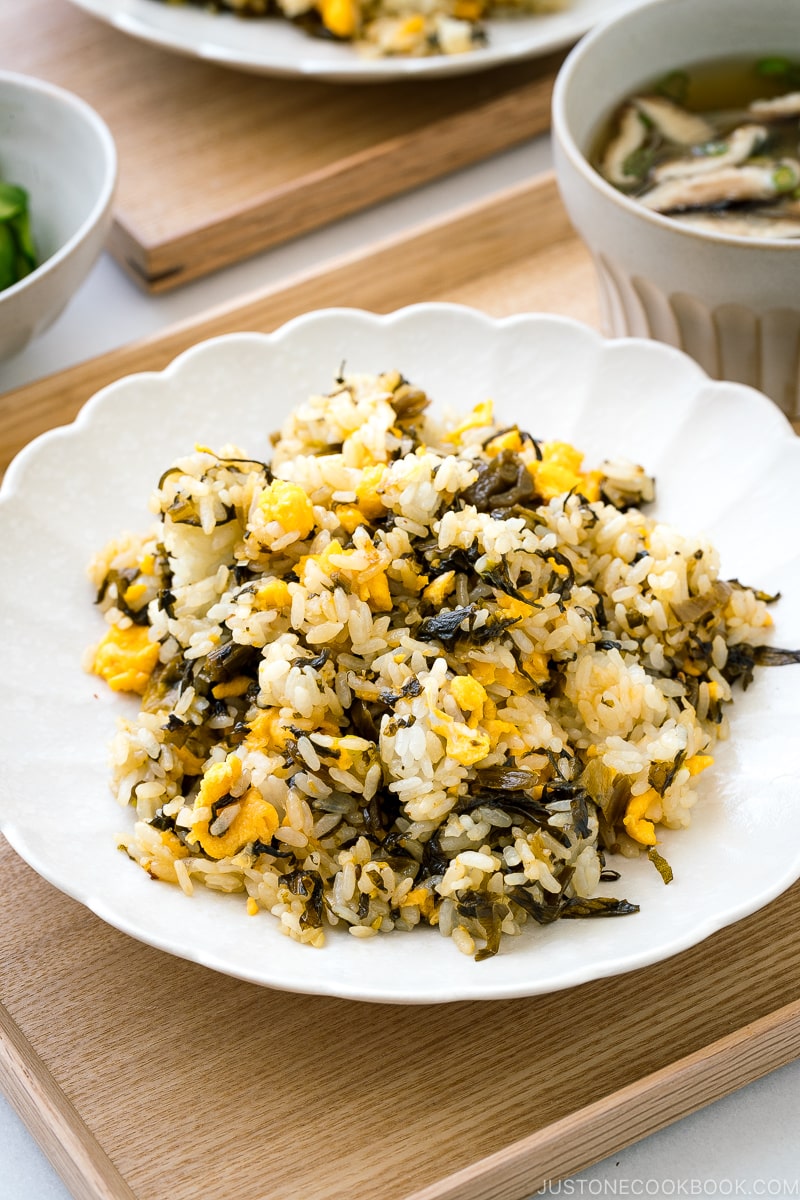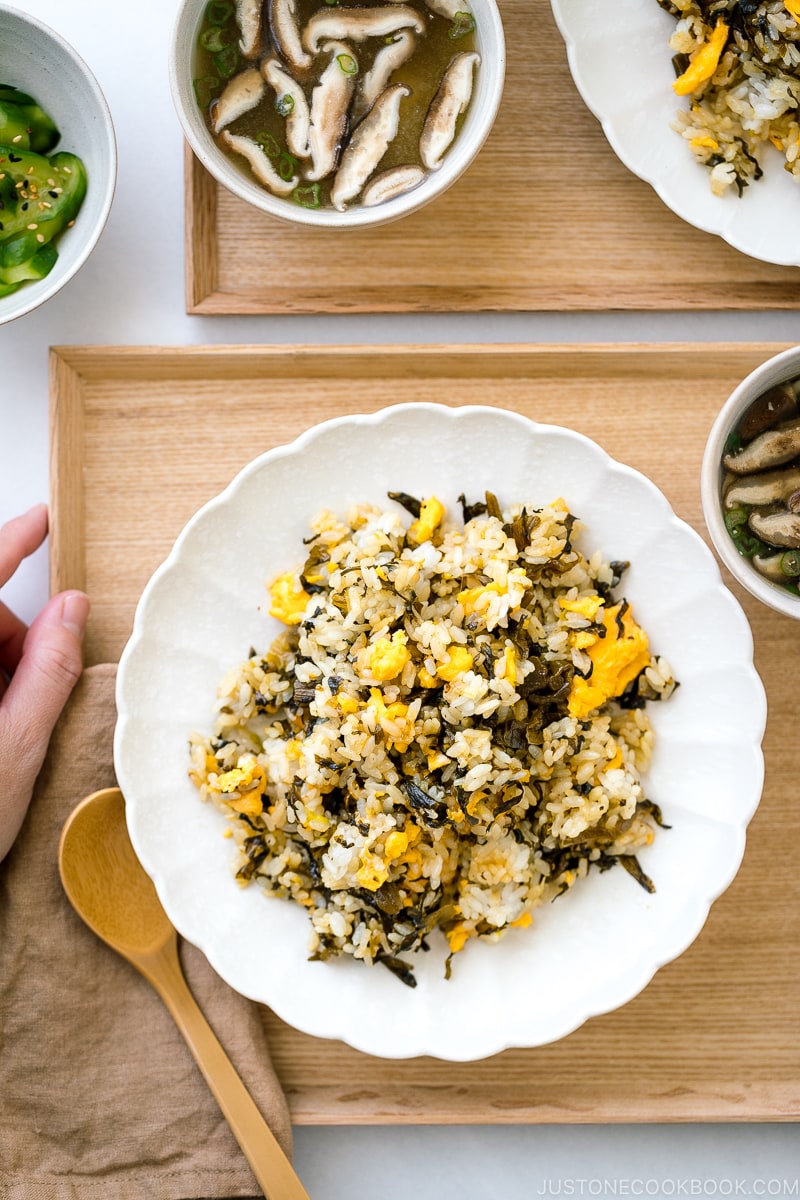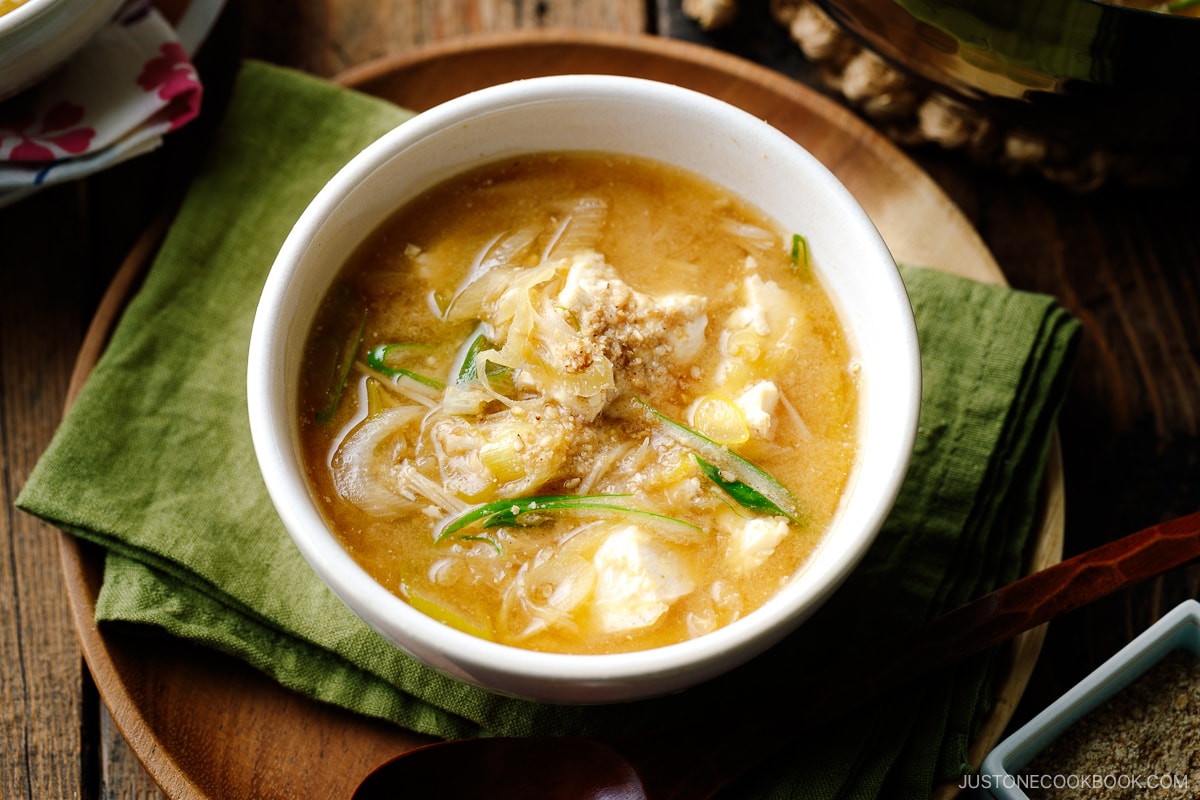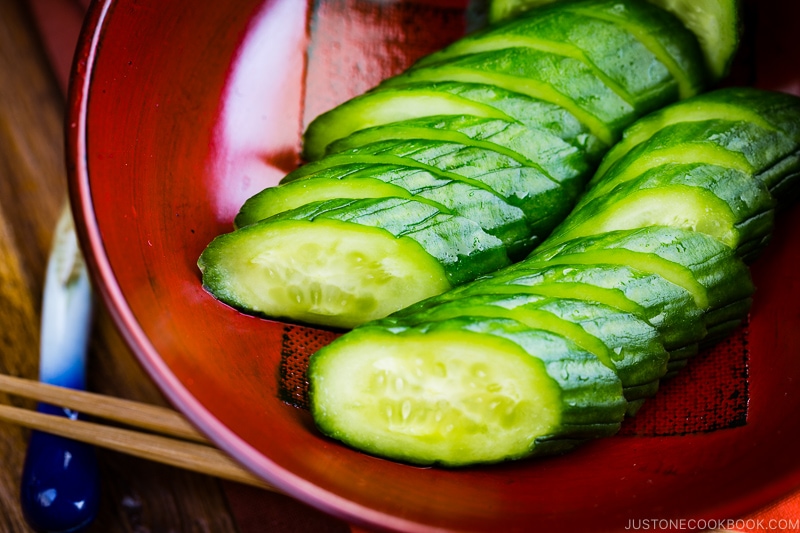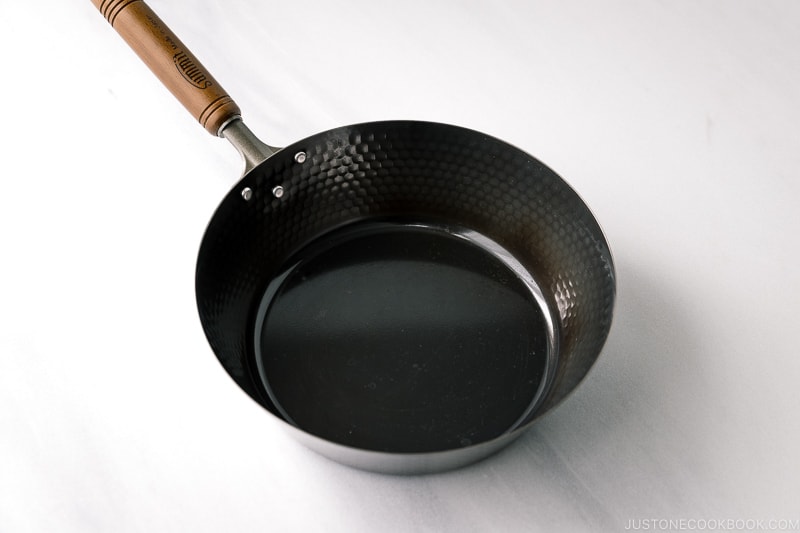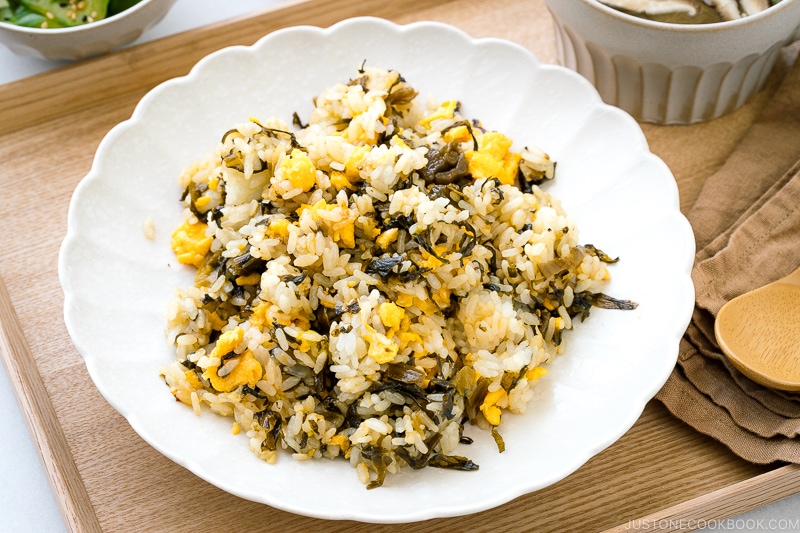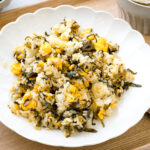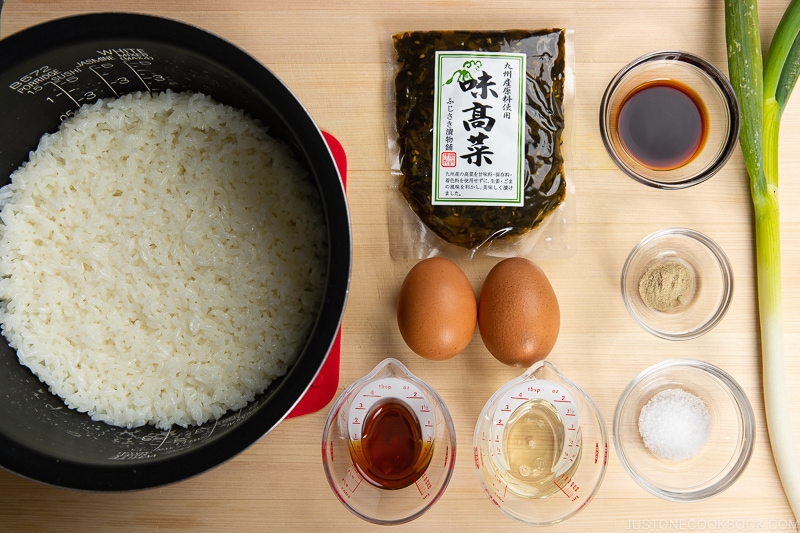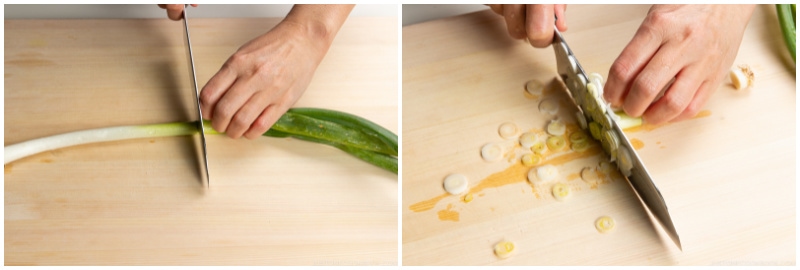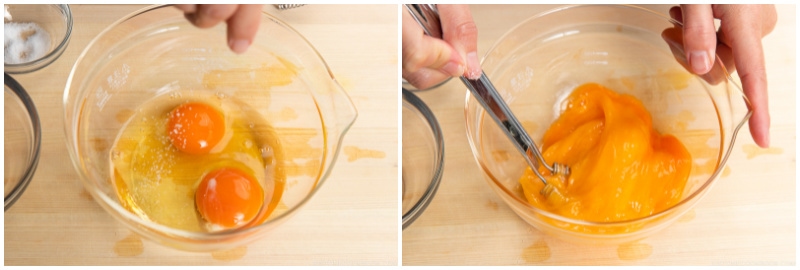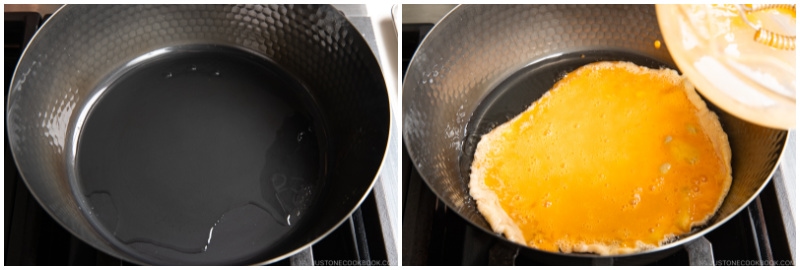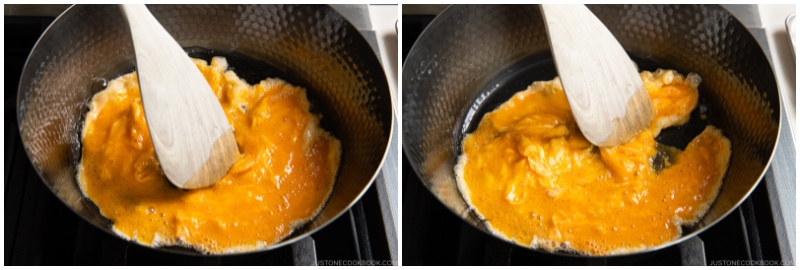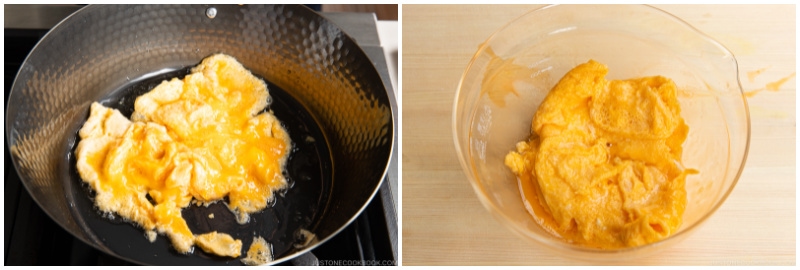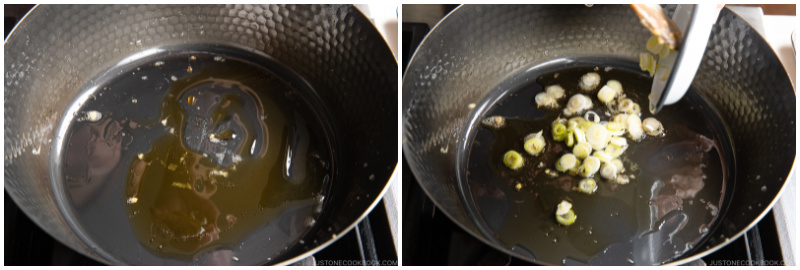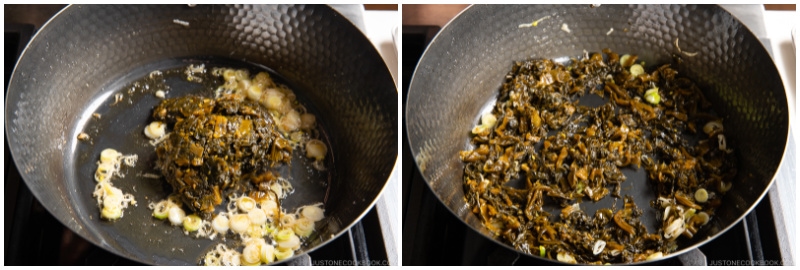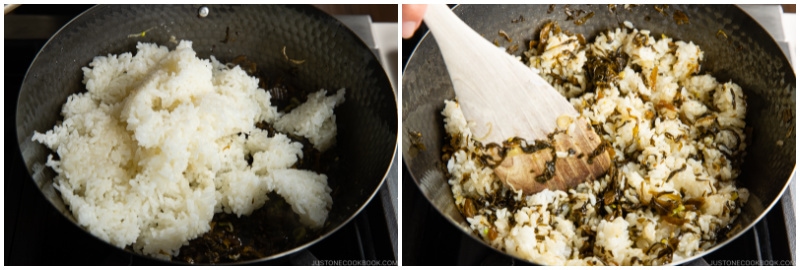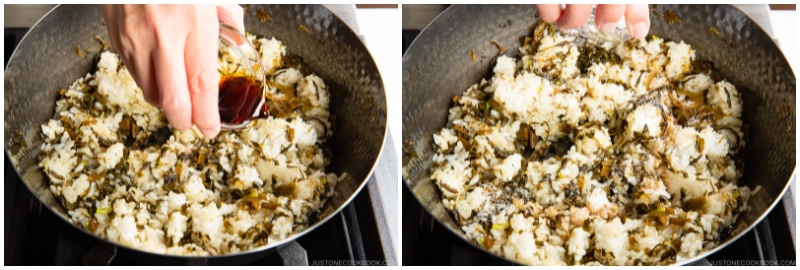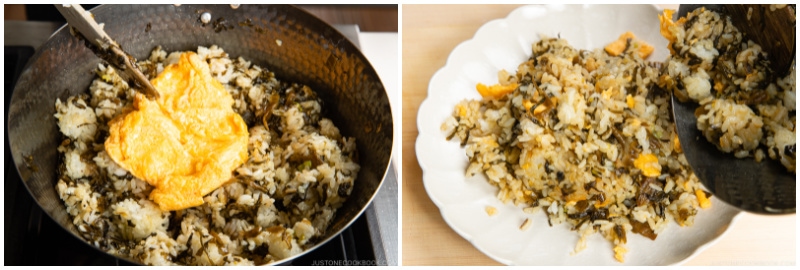We all have eaten our fair share of fried rice. There are the classic favorites Shrimp Fried Rice, Chashu Fried Rice, Garlic Fried Rice, Kimchi Fried Rice, and endless variations that can be found across Asian cuisines. Today I’m serving up a very special kind of Japanese fried rice—Pickled Mustard Greens Fried Rice called Takana Chahan (高菜チャーハン).
What is Takana Chahan?
Chahan (チャーハン) is the Japanese pronunciation for Chinese-style fried rice “炒飯” (pronounced [chǎo fàn]). We call fried rice Chahan or Yakimeshi (焼き飯). Takana chahan is essentially simple and rustic fried rice made of rice, egg, and takana (pickled mustard greens). It may not be a familiar dish to many non-Japanese, but the takana chahan is easily one of the top 5 fried rice dishes you will encounter when you’re traveling in Japan. You’ll find it at restaurants or yatai (Japanese street vendors) or cafes. If you live in a city where many Japanese people live, you may also find this fried rice on your menu. We have a local ramen shop here in San Francisco that serves Takana Chahan. The key characteristic of the takana chahan is its minimalist approach to the ingredients—every grain of the rice should be fluffy, distinct, and slightly crisp on the edges, and packed with delicious tangy bits of takana.
What is Takana?
Takana (高菜) is a type of Japanese mustard greens, which came to Japan from China during the Heian period (794 – 1185). It is one of the top three mustard greens along with nozawana (野沢菜) from Nagano prefecture and hiroshimana (広島菜) from Hiroshima. When takana is soaked in a soy sauce pickling agent, the pickled dish is called takana or takana-zuke (高菜漬). In Kyushu, takana-zuke is used in a variety of dishes, and one of them is takana aburaitame (高菜油炒め) or aji takana (味高菜). It involves chopping the pickled mustard greens into small pieces, then stir-frying with sesame oil, chili, and sesame seeds. Takana chahan is typically made with this takana aburaitame, which lends the fried rice its unique flavor. Although I can’t get takana, the Japanese mustard greens, in San Francisco, I can get a package of takana aburaitame from a Japanese supermarket. Besides using it in fried rice, we often use takana aburaitame to make onigiri (rice ball) and pasta, add to natto or steamed rice, top it over ramen, or stuff it into dumplings as a filling.
Ingredients for Takana Chahan
Takana (Takana Aburaitame (高菜油炒め) or Aji Takana (味高菜))—stir-fried pickled Japanese mustard greens Tokyo negi (Japanese long green onion) or white parts of the green onions/scallions Cooked rice Eggs Seasonings: soy sauce, salt, and white pepper powder
How to Make Takana Chahan
3 Important Tips to Make Perfect Fried Rice
Do not overcrowd your pan – I use this 10-inch carbon steel deep frying pan (read more below) so I cook 2 servings (fried rice as a main dish) at a time. It’s important to have enough space in the pan so that the ingredients have space to move.
Use day-old rice or let cool the rice – Ideally, you should use day-old cold rice because it is firmer and has no excess moisture. But if you have to use freshly cooked rice, be sure to cook it ahead and let it cool entirely on the kitchen counter. I use a baking sheet to spread the cooked rice so the moisture will evaporate and cool down quickly.
Don’t skimp on oil – You will need a decent amount of oil to cook the fluffy eggs. Hot oil helps to distribute heat and prevent the eggs from sticking to the pan. Don’t worry about oily eggs because they will go back into the pan later and distribute the excess oil to the rice when everything is tossed together in the pan.
What is the best substitute for takana?
I researched high and low and thought hard on this for a long time. I almost didn’t want to share this super popular fried rice recipe as I am aware that many people probably don’t have access to the takana. However, at the end, I decided to post the recipe because the takana chana is a beloved comfort dish in Japan and it deserved to be made known, whether you can make it or not:) If you really want to try this dish without the takana, Chinese pickled mustard greens (酸菜心) would be the closest substitute.
How can I use Chinese pickled mustard greens in this recipe?
It’s important to note that Chinese pickled mustard greens have a more vinegary taste and the flavor can be rather different from Japanese pickled mustard greens. Takana or takana-zuke has a soy sauce taste and a milder pungency. So, how do we use the Chinese pickled mustard greens in this recipe so it renders the closest flavor? You will have to chop the Chinese pickled mustard greens into small pieces and cook it with sesame oil and dried red chili. Once the vinegary taste is lessened, season it with a little bit of sake, mirin, soy sauce, and sugar (start with an equal ratio). Finally, sprinkle toasted sesame seeds and it would be your homemade version of takana aburaitame. You’re all set for making the takana chahan. The final dish should have a similar look and taste.
What to Serve with Takana Chahan
This fried rice is delicious in its simplicity and makes a perfect lunch. I love it so much that I can just devour it on its own. But to make it a truly satisfying meal, I often serve soup and a simple pickle to go with it.
Miso Soup with Enoki Mushrooms and Grond Sesame Japanese Pickled Cucumbers
Kitchen Tools from MTC Kitchen
I’ve partnered with MTC Kitchen to introduce quality kitchen tools for your everyday Japanese cooking. You will get 10% off with a coupon code JOC10 for your purchase. In this post, I’ve used:
Summit Iron Hammered Deep Frying Pan 10.2″ dia × 5.2″ ht Kobiki Ivory Kobachi Bowl Shaved Design 7 fl oz / 4.25″ dia Kobiki Ivory Soup Cup with Handle Shaved Design 11 fl oz / 4.2″ dia Kobiki Ivory Coffee Mug Cup Shaved Desgin 10 fl oz / 3.5″ dia
Wish to learn more about Japanese cooking? Sign up for our free newsletter to receive cooking tips & recipe updates! And stay in touch with me on Facebook, Pinterest, YouTube, and Instagram.
